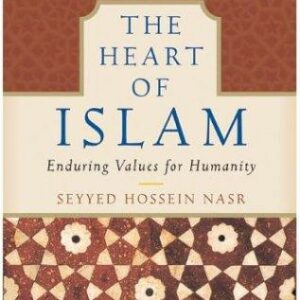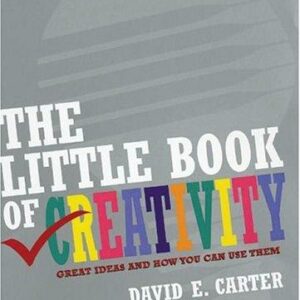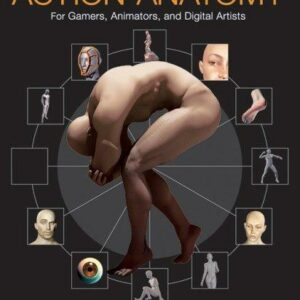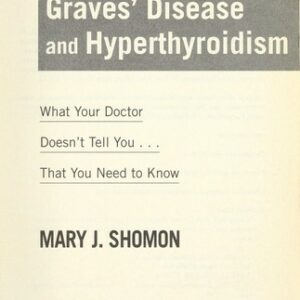Jesus and the Jewish Roots of Mary
$25.00
| Title | Range | Discount |
|---|---|---|
| Trade Discount | 5 + | 25% |
- Description
- Additional information
Description
“Brant Pitre is one of the most compelling theological writers on the scene today.” –Bishop Robert Barron
Bestselling author of Jesus and the Jewish Roots of the Eucharist casts new light on the Virgin Mary, illuminating her role in the Old and New Testaments.
Are Catholic teachings on Mary really biblical? Or are they the “traditions of men”? Should she be called the “Mother of God,” or just the mother of Jesus? Did she actually remain a virgin her whole life or do the “brothers of Jesus” refer to her other children? By praying to Mary, are Catholics worshipping her? And what does Mary have to do with the quest to understand Jesus?
In Jesus and the Jewish Roots of Mary, Dr. Pitre takes readers step-by-step from the Garden of Eden to the Book of Revelation to reveal how deeply biblical Catholic beliefs about Mary really are. Dr. Pitre uses the Old Testament and Ancient Judaism to unlock how the Bible itself teaches that Mary is in fact the new Eve, the Mother of God, the Queen of Heaven and Earth, and the new Ark of the Covenant.”This book is vintage Brant Pitre: clear, persuasive, readable, and above all, inspiring. It causes us not only to know more about the Mother of God, but also to love her more.” –Robert Barron, Auxiliary Bishop of Los Angeles and author of To Light a Fire on the Earth
“Mystified by the way Catholics speak about Mary? Join the club! But if you – like me – have longed for a book that makes a good biblical case for Catholic teachings relating to Mary, then look no further! Brant Pitre has produced an absolutely riveting, page-turning read, surely the most thought-provoking and stimulating I have ever read on the subject.” –Chris Tilling, Graduate Tutor and Senior Lecturer in New Testament Studies
“I did not think a single book could be written about Mary that would excite and unite Catholic and Protestant readers – scholars, clergy and laity alike. What Pitre does with the Bible and Marian typology is clear and compelling. A joy to read, this is the best biblical study of Mary I have ever read. A true masterpiece.” –Scott Hahn, author of The Lamb’s Supper and The Fourth Cup
“Combining detailed biblical study with his own personal reflections, Pitre explains how Mary the mother of Jesus came to be regarded as a new Eve, a new Rachel, the ark of the new covenant, heavenly queen, perpetual virgin, and mother of God. The volume is an accessible, indeed essential, guide to Roman Catholic teaching, and it should interest anyone seeking deeper understanding of Mary’s role.” –Amy-Jill Levine, University Professor of New Testament and Jewish Studies, Vanderbilt Divinity School and College of Arts and Science
“Brant Pitre takes important theological truths and makes them not only interesting, but exciting. This book will revolutionize your understanding of the most important woman in history.” –Jennifer Fulwiler, author of One Beautiful Dream
“Combining rich Biblical scholarship with an engaging, easy-to-read style, this highly accessible book offers a fresh look at Mary in the Bible. Pitre clearly and convincingly shows that the Bible reveals much more about Jesus’ mother than is commonly appreciated today. A must read for every Christian who takes the Bible seriously and is open to what God’s Word has to say about Mary.” –Edward Sri, author of Walking with Mary
“It simply is not possible to read the Christian Scriptures without reading the New Testament in light of the Old. With his rare combination of historical-critical mastery and theological erudition, Pitre illumines the whole Scriptures in pondering the figure of Mary.” –Matthew Levering, James N. and Mary D. Perry Jr. Chair of Theology, Mundelein Seminary
“‘Mary is not a…dogma, but a person.’ This climax, towards which Brant Pitre masterfully leads the reader, is exemplified throughout his book Jesus and the Jewish Roots of Mary, a study which is both careful in argument and breathtaking in scope. Pitre’s premise is that we must look to the Old Testament as well as the New Testament to find the Mother of God. In doing this, we follow the Church Fathers (and also the apostles!), who used typology to clarify both the person of Jesus and his mother. Readers will delight in a thorough but accessible presentation that judiciously incorporates Scripture, ancient writings, and contemporary scholars from Protestant, Catholic, Orthodox, and even Jewish contexts. Especially intriguing is his convincing construal of holy Mary as a ‘new Rachel’ who intercedes for her children. Here is a winsome book, whose Catholic perspective will engage both Catholic and Orthodox who honor the Theotokos, and Protestants who have questions to ask about her.” –Edith Mary Humphrey, William F. Orr Professor of New Testament, Pittsburgh Theological Seminary
“I’ve spent a long time reading books, loving books, collecting books…and I’ve spent the last four decades evangelizing with books. So I know that this one is destined to become what the sisters call a ‘bread and butter’ title. That’s convent talk for basic, necessary, life-giving, something you never get tired of. In other words, not a shelf-sitter or dust collector. This one’s a gem and a keeper. It is absolutely clear, convincing, heartfelt mariology…and it’s also something you could easily give to your bishop or your hairdresser. Brant’s books have always opened doors for me, into familiar places and wonderfully unexplored places. But this one? This one is a golden door. Because he speaks of someone he loves, and you can feel it. So whether this is your first introduction to the beautiful Mother of God or whether it is a deepening of a love story already begun, this book deserves to be read and SHARED!” –Sr. Julia Darrenkamp, F.S.P., Pauline Books and MediaBRANT PITRE is a professor of Sacred Scripture at Notre Dame Seminary in New Orleans, Louisiana. He is the author of the bestselling book Jesus and the Jewish Roots of the Eucharist: Unlocking the Secrets of the Last Supper (2011). Dr. Pitre is an extremely enthusiastic and highly sought-after speaker who lectures regularly across the United States. He has produced dozens of Bible studies on both CD and DVD, in which he explores the biblical roots of the Catholic faith. He has also appeared on a number of Catholic radio and television shows, such as Catholic Answers Live and programs on EWTN. He currently lives in Louisiana with his wife, Elizabeth, and their five young children.Chapter 1
Introduction
This book is written for anyone who has ever wondered what the Bible really teaches about Mary, the mother of Jesus. In particular, it is written for those who have been puzzled by, struggled with, or rejected Catholic beliefs about Mary as unbiblical—if not idolatrous. I should know. I was one of them. Here’s how the story goes . . .
The Problem with Mary
When I was growing up, I had no problem believing what the Catholic Church teaches about Mary. I was born into a Catholic family, baptized as an infant, and raised in predominantly Catholic South Louisiana. Every Sunday, I attended a Catholic church that had several statues of Mary. On special occasions, I lit a candle and would ask Mary to pray for me. One of my earliest memories is of my mother taking my brothers and me to pray the Rosary with my grandmother and great-grandmother. While the women prayed, we boys would sit on the floor playing and listening and—if memory serves—getting pretty bored. However, by the time I was seven or eight years old, my older brother and I had picked up the practice for ourselves. Believe it or not, we boys used to kneel beside our beds at night for thirty to forty minutes while we read the Bible verses and said the prayers in a little book called The Scriptural Rosary.
In the years that followed I would come to learn the basic teachings of the Catholic Church regarding Mary: that she was a virgin when she conceived Jesus (the virginal conception) and that she remained a virgin her whole life long (perpetual virginity). Eventually, I also learned that she was created without sin (immaculate conception) and remained sinless her whole life, and that, at the end of her life, she was taken up body and soul into heaven to be with the risen Jesus (bodily assumption). In all that time, it never once crossed my mind to question anything that the Church taught, believed, or practiced with regard to Jesus’ mother. To me, Mary was a real person, an ordinary part of my life. When I read Mary’s declaration that “all generations shall call me blessed” (Luke 1:48)—I knew that included me. Mary was the “Blessed Mother”—Jesus’ mother and mine.
Things began to change, however, when I met my future wife, Elizabeth. Although she came from an even bigger Cajun family than mine—they had eight children, we had only six—she was not Catholic. Her family was Baptist. In fact, Elizabeth’s late grandfather had been a very prominent Southern Baptist missionary, who founded many Baptist churches along the bayous of South Louisiana. Her grandmother was also a well-known and much-loved matriarch of the local Baptist churches, and an amazing Christian woman. Given the predominantly Catholic population of South Louisiana, many of the members of her grandfather’s churches were ex-Catholics who had left to become “Bible-believing Christians.” In practice, this meant accepting the doctrine of the “Bible alone” (Latin sola Scriptura) and rejecting many Catholic doctrines and practices as contrary to Scripture. In particular, they were taught to reject the Catholic beliefs in Mary’s perpetual virginity and sinlessness as unbiblical, and to regard practices such as praying the Rosary and venerating Mary—all widespread in the popular piety of Cajun Catholicism—as idolatry.
As you might expect, once Elizabeth and I began dating—at the ripe old age of fifteen—both she and her family began to ask questions about my beliefs. It was all the usual Protestant versus Catholic stuff: Why do you have statues in your churches when the Bible says make no “graven image”? Why do you baptize babies when they aren’t old enough to personally accept Jesus as their Lord and Savior? Why can’t Catholic priests get married? And so on. Given the fact that Elizabeth is both very smart and very pretty, and that I really wanted to remain her boyfriend, I did my best to learn about my faith and answer their questions sincerely. And for the most part, it seemed to work fine. Her mother and father continued to allow me to see her, and even though she and I still disagreed about key practices and beliefs, we respected one another and our different faiths. In our sophomore year in college, we decided to get married.
All that changed, dramatically, in the course of a single afternoon, not long before our wedding. Elizabeth and I had scheduled a meeting with the new pastor of her family’s church in order to discuss getting married there. We assumed there would be no problems, since Elizabeth’s grandfather had built the church himself. However, once we sat down in the pastor’s office, what was supposed to be a brief meeting turned into a heated, two-hour-long interrogation of me by the pastor about my Catholic faith. Over and over again, he pommeled me with questions about purgatory, the saints, the pope, the Eucharist, and, of course, the Virgin Mary.
I wrote about this encounter in my earlier book Jesus and the Jewish Roots of the Eucharist. There I told the story of how I went home that night particularly upset about the pastor’s attack on the Catholic belief that the bread and wine of the Eucharist really become Jesus’ body and blood. I also told how that night, while searching for answers, I opened my Bible to the passage where Jesus declares that his “flesh” and his “blood” are “real food” and “real drink” (John 6:53–58). In part, because I immediately stumbled onto this key biblical passage, I never really lost my faith in Jesus’ real presence in the Eucharist.
However, the impact of the pastor’s attack on my beliefs about Mary was different. When it came to Mary, I had no similar aha! moments. I did not go home and stumble onto passages in the Bible that clearly taught that she was immaculately conceived, that she had committed no sins, or that her body was assumed into heaven. To the contrary, from what I could tell, the New Testament had surprisingly little to say about Mary. Moreover, what it did say was sometimes cause for concern. In short, when it came to the biblical basis of my beliefs about Mary, the pastor had posed questions to which I had no answers. One question of his in particular stands out in my memory: the charge that Catholic veneration of Mary is not just unbiblical but idolatrous.
The Queen of Heaven?
“Why do you Catholics worship Mary?” the pastor fired off at me. “Don’t you know God alone is to be worshiped?”
Having paid some attention in my catechism class, I was able to reply:
“As Catholics, we don’t worship Mary. We honor her as the Mother of Jesus and the Queen of Heaven.”
“ ‘The Queen of Heaven’?” he retorted. “That’s interesting. Do you know what the Bible says about the ‘Queen of Heaven’?”
“No.” I confessed. “What?”
Knowingly, he opened his Bible and after flipping a few pages, said: “It actually mentions the ‘Queen of Heaven’ in the book of Jeremiah. The Bible says she was a pagan goddess:
[The LORD said to Jeremiah:] “Do you not see what they are doing in the cities of Judah and in the streets of Jerusalem? The children gather wood, the fathers kindle fire, and the women knead dough, to make cakes for the queen of heaven; and they pour out drink offerings to other gods, to provoke me to anger . . .” (Jeremiah 7:17–18).
“There it is, right there!” he announced. “The worship of the ‘Queen of Heaven’—exactly what you Catholics do to Mary—is condemned as idolatry.”
I sat in stunned silence. Although I had put up a fight for many of my other beliefs, I had no idea how to respond to this. To say the least, none of my catechism classes had ever mentioned the “Queen of Heaven” in the book of Jeremiah. Nor had anyone ever explained to me how we could refer to Mary as the Queen of Heaven when the Bible used the same words for the name of a pagan goddess. I thought about my favorite prayer, the “Hail Holy Queen” (also known as the Salve Regina) which I had said countless times at the end of every Rosary. All I could think was Is that what I’ve been doing my whole life? Committing idolatry without even knowing it?
Knowing he had scored a serious point, the pastor moved on to another topic.
Fortunately, that meeting lasted only a couple of hours. However, the effect of the pastor’s questions about Mary had a much longer impact on me. They were like a crack in the windshield of my childhood beliefs—one that started small and slowly spread till I could no longer see clearly. When I looked for the biblical foundations of other Catholic teachings, I found what I considered compelling evidence. However, when it came to Mary, I kept coming up short. I was at a loss. The more I read the few passages in the New Testament that even mention Mary, the more trouble I had finding anything like what the Catholic Church teaches. Where is any of this in the Bible? I wondered.
If you’ve studied the New Testament, you know what I mean. Where does it ever mention Mary’s immaculate conception? Seemingly nowhere. To be sure, the angel Gabriel calls Mary “full of grace” (Luke 1:28)—at least in some translations—but that’s not exactly the same thing as “immaculately conceived.” Or how about the sinlessness of Mary? It seems to fly in the face of the apostle Paul’s declaration that “all have sinned and fall short of the glory of God” (Romans 3:23). And what about Mary’s bodily assumption into heaven? I couldn’t seem to find that anywhere in the New Testament either. To be sure, the book of Revelation does describe a mysterious “woman” who is “in heaven” and is “clothed with the sun” (Revelation 12:1). However, I learned that many interpreters reject the idea that this “woman” is Mary (more on that later). In any case, neither Revelation nor any other book of the New Testament describes her being assumed into heaven. As for the perpetual virginity of Mary, it seems to be flatly contradicted by the New Testament, which explicitly mentions the “brothers” and “sisters” of Jesus (see Matthew 13:55; Mark 3:31–35, 6:3; 1 Corinthians 9:5).
Finally, to top it all off, whenever Mary does appear in the Gospels, instead of venerating her the way I had been taught to do, Jesus himself seems to disrespect her—or at least put her off in ways that, at least by today’s standards, seem pretty rude. Think here of the wedding at Cana, where Jesus says to Mary: “O woman, what have you to do with me? My hour has not yet come” (John 2:4 RSV). What are we to make of this? (I can only imagine what my mother would do if I ever addressed her as “woman.”) Why Jesus’ seeming dismissal of Mary? It almost comes off like a preemptive strike against later devotion to her. How can Catholics say that we should honor Mary when Jesus himself seems to dishonor her?
The impact all of this had on my view of Mary was negative and long-lasting. While I continued to accept many Catholic teachings, my confidence in the doctrines and practices regarding Mary wavered, getting weaker and weaker. Not long after our wedding, I stopped praying the Rosary. Eventually, I began to harbor serious doubts about several of the Church’s teachings about Mary—her immaculate conception, her bodily assumption, and her perpetual virginity. After all, Joseph and Mary were married, weren’t they? Why shouldn’t they have an ordinary marriage with other children? In the grand scheme of things, what difference did Mary’s perpetual virginity actually make?
The years passed, and by the time I got to the University of Notre Dame, in 1999, to begin studying for my Ph.D. in theology, I had serious objections to many of the Catholic Church’s official teachings about Mary. I also no longer practiced the Catholic devotions to Mary that were part of my childhood faith.
But then something dramatic happened, something that would alter the way I saw Mary forever, and would lay the foundations for the writing of this book. I began to discover the Jewish roots of Catholic beliefs about Mary.
Through Ancient Jewish Eyes
Most Ph.D. programs in biblical studies tend to specialize in either the New Testament or the Old Testament. At Notre Dame, however, the doctoral program was entitled Christianity and Judaism in Antiquity. This meant that all Ph.D. students in biblical studies were required to take courses in both the New Testament and the Old Testament, both Greek and Hebrew, both early Christianity and ancient Judaism. It is hard for me to overemphasize how pivotal Notre Dame’s both/and approach was in helping me to understand the Jewish roots of Catholic beliefs about Mary. In the course of my studies, I learned three things that completely changed the way I saw Mary.
First, I learned that Catholic beliefs about Mary are deeply rooted in ancient Christianity. As we will see over the course of this book, Mary’s perpetual virginity, sinlessness, identity as “Mother of God,” power of intercession, and bodily assumption into heaven are not new ideas but old—very old. Moreover, such beliefs were extremely widespread, held by Christians living in the Holy Land, Syria, Egypt, Greece, Asia Minor, Rome, and elsewhere. In short, they were part and parcel of the ancient Christian faith.
Second, I gradually understood that these ancient Christian beliefs about Mary flowed directly out of what early Christians believed about Jesus. In the words of the Catechism of the Catholic Church:
What the Catholic faith believes about Mary is based on what it believes about Christ, and what it teaches about Mary illumines in turn its faith in Christ. (CCC 487)
I cannot overemphasize the significance of this principle. If you want to understand what the Bible teaches about Mary, you have to make sure you begin with what it teaches about Jesus. Therefore, in every chapter, before we look at Mary, we will consider Jesus.
Third, and most important of all, I discovered that ancient Christians got their beliefs about Mary from the Old Testament—not just the New Testament. In fact, the key to understanding what the Bible teaches about Mary can be found in what is called “typology”: the study of Old Testament prefigurations (or “types”) and their New Testament fulfillments. In the words of Joseph Ratzinger (who later became Pope Benedict XVI): “The image of Mary in the New Testament is woven entirely of Old Testament threads.” Along similar lines, the Protestant theologian Timothy George writes:
Evangelicals have much to learn from reading Mary against the background of Old Testament foreshadowings . . . The image of Mary in the New Testament is inseparable from its Old Testament antecedents, without which we are left with not only a reductionist view of Mary, but also of Christ.US
Additional information
| Weight | 12.4 oz |
|---|---|
| Dimensions | 0.9400 × 5.7000 × 8.5300 in |
| Imprint | |
| Format | |
| ISBN-13 | |
| Author | |
| Audience | |
| BISAC | |
| Subjects | life of Mary, hanukkah books, religious gifts for women, religious gifts for men, hannukah gifts, Catholic tradition, catholic gifts for women, mother of god, Nazareth, Mary of Nazareth, hanukkah gifts, blessed mother, Pope John Paul II, manger, jewish bible, jesus bible, brant pitre, catholic gifts for men, dot to dot books for kids ages 3-5, jewish, REL067000, new testament, Christian, christianity, religion, REL006210, inspiring, mother, god, theology, faith, Catholicism, bible, bible study, jesus, mary, analysis, scriptures |










